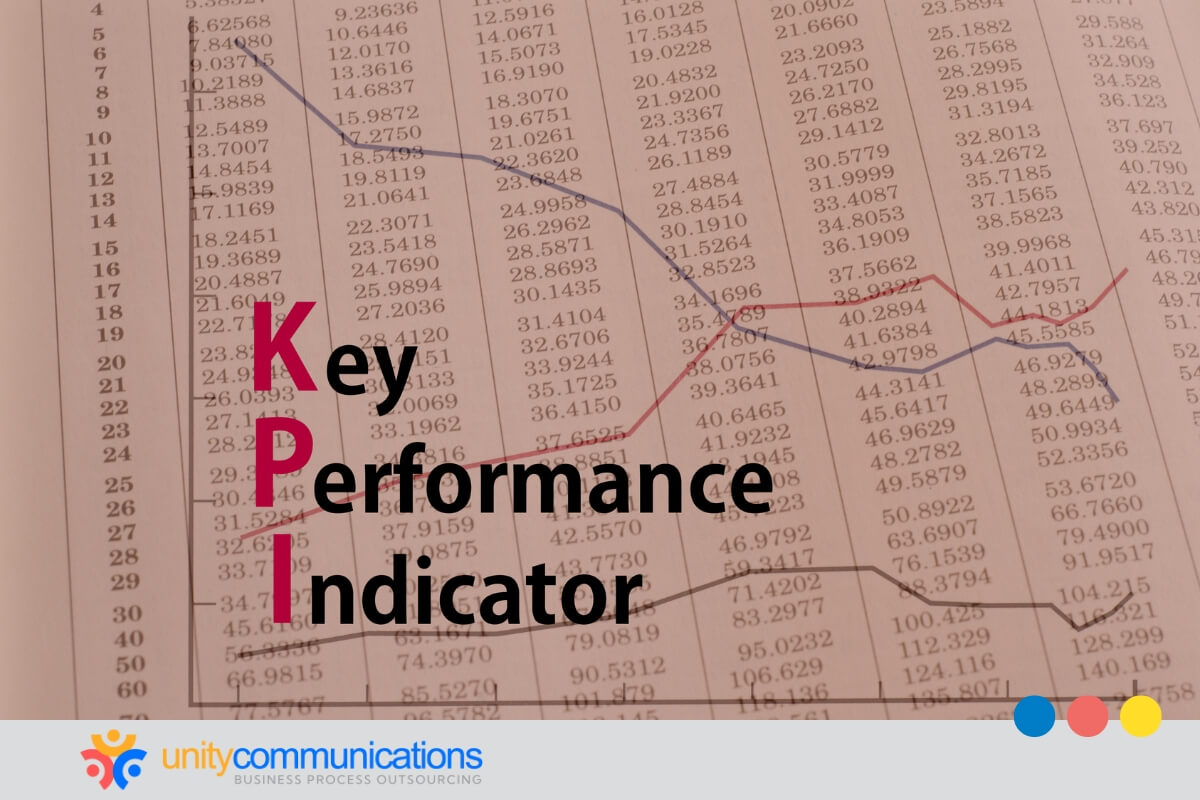Table of Contents
Is your company overspending on content creation without getting the results you expect? Business process outsourcing (BPO) offers a cost-effective way to handle content needs.
Balancing costs and quality in content outsourcing requires a thoughtful approach, from selecting the right service provider to streamlining workflows. This article explores practical strategies to maximize savings without cutting corners. Keep reading to discover how smart outsourcing choices can improve efficiency and output!
Balancing cost and quality in outsourced content

What is BPO? It is the practice of delegating tasks to third-party teams. Deloitte reports that 34% of executives cite cost reduction as a key driver for outsourcing. However, cost savings should compromise quality to maximize the investment.
First-rate quality assurance helps maintain this balance in outsourced content. Here are practical strategies for ensuring quality and cost-efficiency:
- Top–notch quality control methods: Quality assurance processes should include extensive reviews for consistency and accuracy.
- Clear communication and regular feedback loops: Smooth coordination and frequent check-ins help align the third-party team with company goals, reducing costly rework and errors.
- Measurable benchmarks: Establish criteria for each project that fulfill your specific cost and quality requirements.
- Automation tools for repeated duties: Automating typical operations lowers labor costs, improves productivity, and reallocates resources for more profitable creative content development.
Choosing the most cost-effective content types for outsourcing
Content types vary in complexity, time investment, and required expertise. Selecting those that offer the best value is essential. Here are points to consider when balancing costs and choosing content types in outsourcing:
- Focus on core content types relevant to your business objectives, such as blog posts, articles, case studies, white papers, service reviews, or product descriptions. These are often scalable and easier to handle when outsourced.
- Delegate functions requiring specific knowledge, such as search engine optimization (SEO), technical writing, or long-form content creation. This allows firms to access a game–changer skill set that in-house teams might lack.
- Prioritize cost-effectiveness by choosing content types that don’t need extensive changes or time-consuming processes, such as social network postings, email newsletters, or ad copy.
Selecting budget-friendly outsourcing partners without sacrificing value
Finding a suitable BPO partner involves more than just comparing prices. Balancing costs in content outsourcing requires carefully evaluating affordability and the long-term benefits the BPO company can provide.
Here are a few factors to keep in mind:
- Industry expertise: Choose third-party experts who understand your business and industry. Their familiarity with your niche can result in better content quality, minimal errors, and fewer revisions.
- Transparent pricing: The potential outsourcing partner must provide clear and upfront BPO pricing models. This reduces the chances of hidden costs or unexpected fees that can drive up overall expenses.
- Scalable solutions: The BPO team should handle small and large-scale projects, allowing your enterprise to grow without frequent changes, disruptions, or delays that can incur extra costs.
- Strong quality control measures: Your BPO partner should implement rigorous content review processes to enhance consistency. An OrbitMedia survey says 35% of marketers struggle to consistently create quality blog content, highlighting the importance of working with third-party professionals who can help fill that gap.
Negotiating fair pricing and preventing hidden costs
When collaborating with a BPO organization, securing reasonable pricing while avoiding hidden fees is essential to controlling your budget. Balancing costs in content outsourcing requires a strategic approach to match the pricing model with your financial goals.
Examine some key steps:
- Assess pricing based on project requirements. Many BPO firms offer tiered pricing based on the content’s complexity and scale. Opt for a package that fits your needs without overspending.
- Negotiate for bundled pricing or discounts. Request price reductions for consistent work volumes if you want to work with the service provider long-term. Many offer discounts for ongoing contracts.
- Review service-level agreements (SLAs). Scrutinize SLAs and payment terms to prevent hidden costs tied to timelines, quality expectations, or revisions. This aligns with both parties’ expectations.
- Clarify payment terms upfront. Agree on payment schedules and methods initially. It minimizes misunderstandings regarding payment deadlines or additional charges for rushed payments.
- Consider a performance-based pricing model. Some outsourcing companies offer performance-based pricing where costs are tied to content engagement or output quality. This approach helps control expenses while confirming you only pay for high-quality work.
Using cost-effective tools to simplify communication with the BPO team

Effective communication is critical when balancing costs in content outsourcing. With the correct tools, you can improve collaboration and avoid confusion, which might result in unnecessary expenses.
Below are some tools that can help facilitate smooth communication:
- Project management tools: Trello, Asana, Monday.com, and similar apps enable teams to track work, set deadlines, and provide real-time updates. They help with effortless interaction between different teams.
- Instant messaging applications: These platforms promote rapid communication, decrease delays, and allow teams to resolve problems or concerns immediately. Slack and Microsoft Teams serve as examples.
- Video conferencing solutions: Zoom, Google Meet, and Skype are all feature-free versions that are excellent for virtual face-to-face meetings. They allow you to form relationships and handle issues better.
- File-sharing applications: Google Drive, Dropbox, or OneDrive simplify document sharing and allow all relevant team members to access up-to-date files.
- Time-tracking tools: Harvest, Toggl, and comparable software help you track time spent on tasks and optimize workflow, offering better insight into productivity and preventing unnecessary costs.
Avoiding unnecessary expenses with clear goals and deliverables
Establishing clear objectives and deliverables is vital for effective outsourcing project management. Well-defined goals and results help align expectations, streamline processes, and prevent excessive spending.
Consider the strategies below when balancing costs in content outsourcing:
- Define project scope and purpose. Specify the aims, deliverables, and limitations to guide the planning, development, and execution stages.
- Set measurable objectives. Form specific, quantifiable targets to monitor progress and status and assess performance.
- Determine tangible deliverables. List the outputs needed to meet project objectives, such as documentation, prototypes, or training sessions.
- Collaborate with stakeholders. Engage the internal and BPO teams to identify priorities and potential gaps, including all their perspectives and input.
- Consider budget and resources. Pinpoint objectives and deliverables achievable within your organization’s available time, budget, and personnel.
- Review progress regularly. Conduct regular assessments to verify that targets stay relevant, commitments are on schedule, and the scope is maintained.
- Execute a change management process. Clarify how any changes to the scope or deliverables should be handled to prevent interruptions and manage costs effectively.
Maximizing long-term cost savings through outsourcing
Outsourcing can deliver long-term savings by optimizing processes, allocating resources efficiently, and allowing more time and effort to be spent on primary operations.
Research shows that outsourcing can reduce labor costs by up to 70%, making it a smart choice for organizations aiming to lower spending while accessing specialized skills. This allows you to channel limited funds to other critical areas, driving value and growth.
Here are strategies to assist you in balancing costs in content outsourcing:
- Leverage skilled talent. Assign specialized tasks to external experts who can produce high-quality results efficiently, reducing the need for costly full-time staff.
- Focus on core competencies. Outsource non-core activities, allowing your internal teams to pay more attention to high-priority tasks that contribute directly to your business goals.
- Automate routine tasks. BPO services involve automating repetitive tasks, lowering labor costs, and increasing productivity.
- Flexible contracts. Work with a BPO provider that offers adaptable contract terms to scale your outsourcing needs based on demand and avoid overhead waste during off-peak periods.
- Improved turnaround times. Outsourcing specific processes speeds up project completion, helping you provide content to your audience faster without extra overhead.
Measuring revenue to track content outsourcing’s impact on your budget
Tracking returns on investments (ROI) helps gauge the effectiveness of BPO solutions for content marketing. Understanding how outsourcing influences income allows for smarter resource allocation and better cost-efficiency.
Check the following key performance indicators (KPIs) to support you in balancing costs and quality in content outsourcing:
- Content-driven lead generation: Track how outsourced content attracts new prospects and contributes to sales pipelines. Higher lead volume indicates effective content performance.
- Customer lifetime value (CLV): Measure the long-term revenue generated per customer influenced by outsourced content, which helps determine profitability.
- Conversion rates: Analyze how well third-party-created content drives sign-ups, purchases, or other valuable actions. Improved conversions signal high-performing content.
- Engagement metrics: Monitor page views, time on page, and social shares to assess how well the audience interacts. Higher engagement often correlates with better revenue potential.
- Cost per acquisition (CPA): Compare outsourcing expenses to the cost of acquiring a customer. A lower CPA suggests more efficient spending.
- Revenue attribution modeling: Identify how different content pieces contribute to overall sales, giving a clearer picture of content outsourcing’s effectiveness.
Adjusting BPO strategies to fit shifting budget and performance needs

Adapting BPO strategies requires flexibility and ongoing evaluation. An iterative approach drives long-term benefits as budgets, goals, and efficiency shift.
Explore the following strategies to assist you in balancing costs in content outsourcing:
Refine service scope based on financial goals
Managing scope instead of cutting outsourcing entirely helps control costs while maintaining efficiency.
- Prioritize high-impact services that directly support revenue generation.
- Scale back or pause non-essential tasks during leaner periods.
- Explore hybrid models combining in-house and the BPO team for cost-effective operations.
Optimize provider contracts for cost efficiency
A well-structured contract cuts costs, maintains quality, and flexibly adapts to changing needs.
- Seek variable pricing models that adjust based on project volume.
- Negotiate shorter contract terms with renewal options to reassess needs periodically.
- Request bundled service packages for a more cost-effective approach.
Align performance benchmarks with evolving objectives
Outsourcing goals shift over time, requiring metrics that reflect current priorities. Regular assessments prevent overspending on outdated benchmarks.
- Revise KPIs to match business growth and market trends.
- Adjust content turnaround times per engagement patterns.
- Implement periodic quality reviews to refine service expectations.
The bottom line
Balancing costs in content outsourcing helps your business maximize resources without cutting corners. A well-planned approach keeps expenses in check while maintaining high standards. The right BPO partner brings expertise, scalability, and efficiency, making content production more effective.
Smart choices in delegation, automation, and contract structuring lead to sustainable growth. Let’s connect and discuss how our outsourcing solutions support cost-effective content strategies that drive success.




